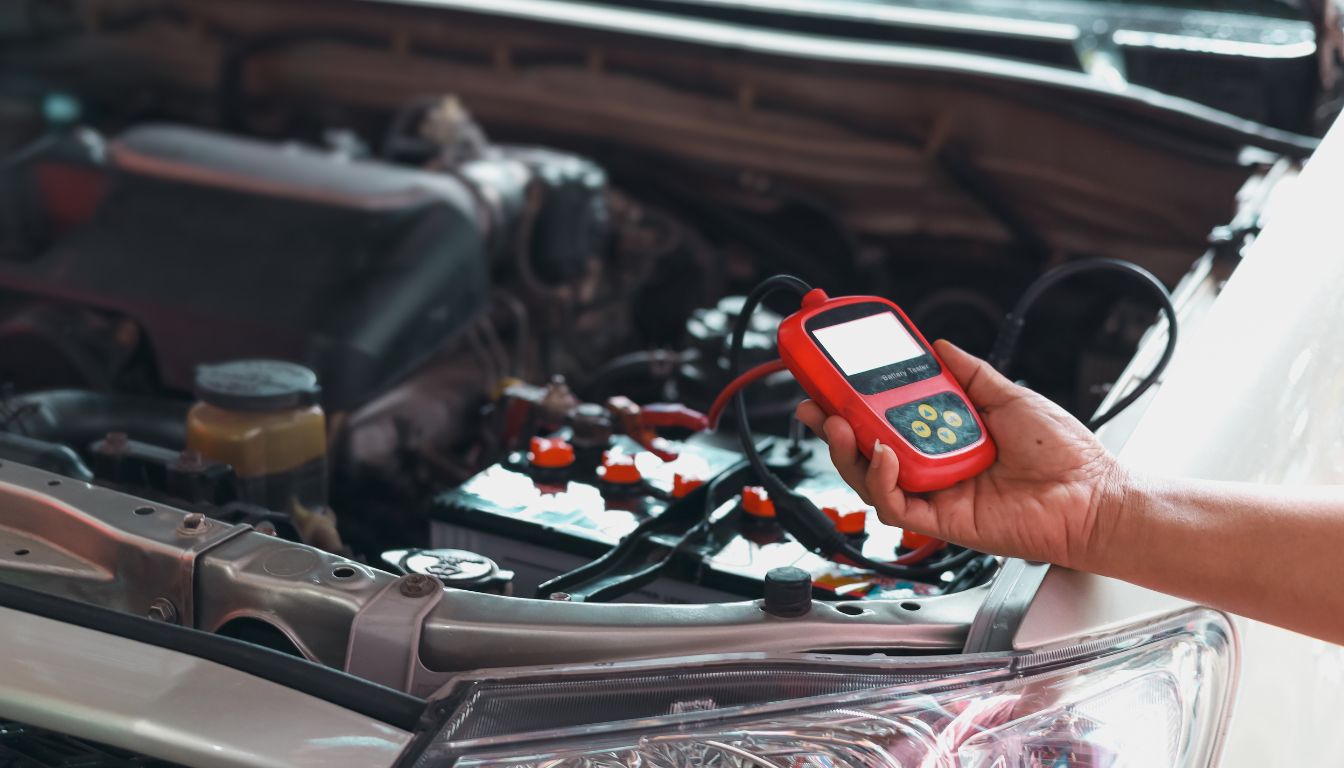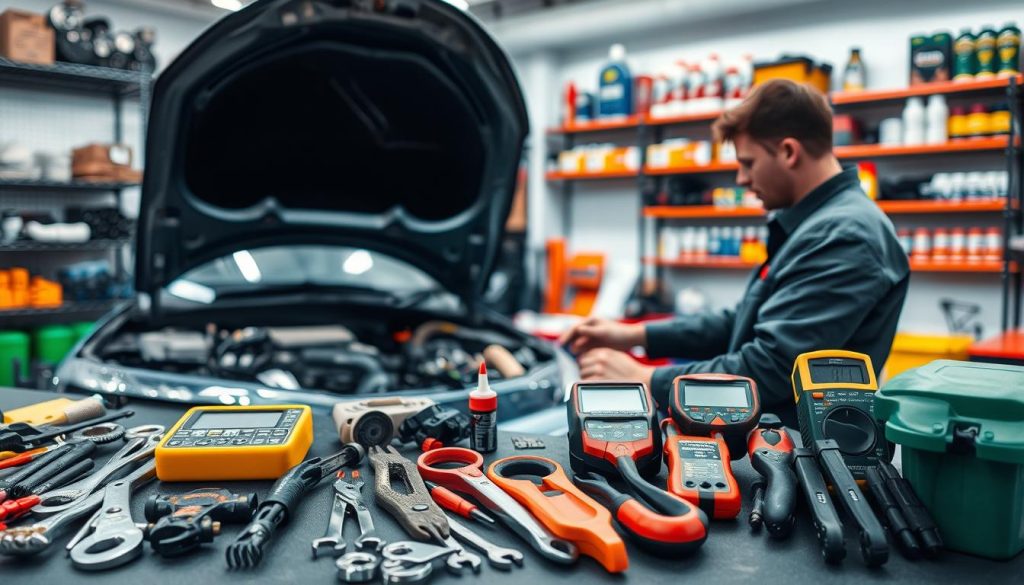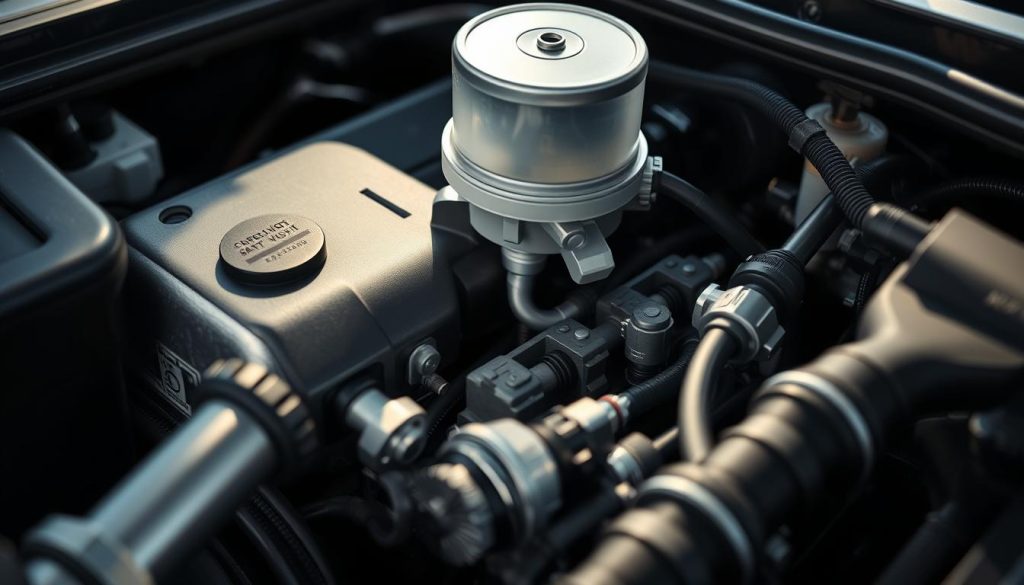
Imagine driving home when your engine starts smoking. You pull over, stuck miles from help. This scene plays out daily—but most breakdowns aren’t accidents. They’re the result of overlooked upkeep.
Your ride gives hints long before trouble strikes. Squeaky brakes? Wobbly steering? These whispers become shouts if ignored. Think of it like a yearly physical: catching small issues early avoids ER visits later. Recognizing the signs of potential breakdowns can help keep your vehicle running smoothly.
Studies show over 60% of roadside calls stem from preventable causes. Dead batteries, worn tires, or low fluid levels often trigger the chaos. A simple flat tire repair service visit could’ve saved that family vacation disaster from unexpected breakdowns.
Ready to ditch the panic? This guide reveals the exact checks that keep you rolling safely on any road, including back roads. We’ll share real stories and easy steps—no mechanic jargon. Let’s turn “What’s that noise?” into confidence on every drive.
Picture this: Your trusted ride glides smoothly down the highway. The secret? Simple checkups stop big headaches. Keeping your machine in shape isn’t just about avoiding breakdowns—it’s about creating worry-free journeys and ensuring your vehicle is in top condition.
Faulty brakes or bald tires don’t just strain your wallet—they risk lives. Ever wonder why some drivers never seem to have close calls? Fresh brake pads grab better in rain. Properly inflated tires hug the road tighter. These small acts build an invisible safety net around your passengers.
That $30 oil change? It’s like changing your furnace filter—skip it, and you’ll pay tenfold later. Mechanics see it daily: engines destroyed by sludge when basic care lapsed. Rotating tires every 6,000 miles adds years to their life. It’s not spending—it’s saving.
Time counts too. One missed fluid check could mean hours stranded next week. Compare 20-minute inspections versus half-day tow truck waits. Which sounds better when you’re rushing to work or daycare pickup?
Truth is: Vehicles last longer when loved. They reward care with reliability—getting you to first dates, job interviews, and cross-country adventures without drama. What’s that peace of mind worth?
It’s 3 AM on a deserted highway when your lights flicker and die. No gas station for miles. What went wrong? Most sudden vehicle failures aren’t random—they’re predictable results of overlooked upkeep.
Ever notice how some drivers always have jumper cables handy? Batteries rarely die without warning. Slow engine cranks or flickering dash lights often come first. Tires blow from gradual wear, not magic—bald tread or low pressure sets the stage for disaster, leading to blowouts that can leave you stranded on a back road.
Ignoring strange noises is like ignoring a toothache. That grinding brake sound? Worn pads chewing rotors. A $200 fix becomes $800 if metal grinds metal. Overheating engines usually start with tiny coolant leaks—easy to spot if you pop the hood monthly. Regular maintenance can prevent a costly breakdown.
| Emergency | Common Triggers | Prevention Steps |
|---|---|---|
| Dead Battery | Corroded terminals, old age | Clean connections yearly |
| Flat Tire | Worn tread, sharp objects | Monthly pressure checks |
| Overheating | Low coolant, broken hoses | Biweekly fluid inspections |
Fun fact: 74% of drivers who experience breakdowns admit they postponed basic care. That dashboard warning light? It’s not decoration—it’s a lifeline. Quick responses to small issues keep tow trucks in your rearview mirror.
Remember that neighbor whose engine caught fire last summer? Mechanics found cracked hoses and empty coolant reservoirs—all detectable during routine checks. Your vehicle speaks through squeaks, drips, and dashboard flashes. Learning its language beats waiting for roadside assistance during an emergency.
Routine checks are like a secret handshake with your vehicle. They keep conversations flowing smoothly between you and your trusted machine. Ever wonder why some tires fail unexpectedly or engines suddenly quit? The answer often lies in overlooked basics.
Your engine oil tells stories. Fresh amber liquid means happy metal parts. Dark sludge? That’s trouble brewing. Transmission fluid should smell sweet, not burnt. Check these monthly:
| Checkpoint | Healthy Sign | Red Flag |
|---|---|---|
| Engine Oil | Golden-brown, smooth texture | Gritty feel, tar-like color |
| Tire Pressure | Matches door sticker specs | Uneven wear patterns |
| Coolant Level | Between MIN/MAX marks | Rust-colored liquid |
That faint whine when turning? Could be low power steering fluid. Wobbly steering at high speeds often means uneven tire wear. Pro tip: Run your hand over treads weekly. If smooth patches appear, rotation’s overdue.
The National Highway Traffic Safety Administration found 11,000+ crashes yearly stem from preventable tire issues. Five minutes with a pressure gauge beats hours waiting for roadside help.
Remember: dashboard lights mean “fix me now,” not “maybe later.”
Smart owners mark inspection dates on calendars like birthdays. Because nothing ruins a road trip faster than preventable surprises. What’s your vehicle trying to tell you today?
You’re running late when your vehicle refuses to start in the grocery store parking lot. That click-click-click sound tells the story—your battery’s given up. But here’s the good news: Most power and braking issues announce themselves weeks in advance.

Batteries hate surprises. Ever notice how headlights dim when you crank the engine? That’s your electrical system begging for attention. Three-year-old batteries should get tested monthly—cold mornings strain aging components. Clean terminals with baking soda paste to prevent corrosion buildup.
Quick checks save days:
Brakes don’t fail—they fade. That high-pitched squeal during stops isn’t just annoying. It’s metal wear indicators screaming, “Change my pads!” Mechanics recommend inspections every 12,000 miles, but listen for these warnings:
| Sign | Meaning | Action |
|---|---|---|
| Grinding noise | Pads completely worn | Immediate replacement |
| Soft pedal | Air in brake lines | Bleeding required |
| Vehicle pulling | Uneven pad wear | Service calipers |
Your local shop can measure pad thickness in minutes. Pro tip: Swap pads before they damage rotors—it’s cheaper than full brake jobs. Remember: Reliable starts and safe stops keep you in control, not waiting for roadside assistance.
Your family’s summer road trip halts abruptly as steam billows from the hood. That sweet antifreeze smell? It’s your vehicle crying for help. The cooling system works like a thermostat for your engine—ignore its whispers, and you’ll face repair bills taller than a skyscraper.
CarMD reports show overheating repairs cost drivers $1,200 on average. Why? Metal parts warp when temperatures spike, leading to cracked heads or seized pistons. But here’s the secret: 89% of these disasters could’ve been stopped with simple checks.
Coolant does more than just prevent freezing. It lubricates the water pump and stops corrosion. Check the reservoir monthly when the engine’s cool—the liquid should sit between MIN and MAX lines. Pink or green color? Good. Milky brown? Trouble’s brewing.
| Warning Sign | What It Means | Quick Action |
|---|---|---|
| Sweet puddles under vehicle | Leaking hoses or radiator | Pressure test system |
| Temperature gauge near red | Low coolant or stuck thermostat | Turn off AC, pull over safely |
| White exhaust smoke | Head gasket failure | Tow to shop immediately |
Smart drivers swap coolant every 30,000 miles—or sooner in extreme heat. Those who wait? They’re gambling with their engine’s lifespan. Ever seen a $4,000 repair bill? That’s what happens when tiny leaks become big meltdowns.
Remember: Your dashboard gauge isn’t decoration. Spot rising temps? Shut off the engine before it shuts off your bank account. A $50 radiator flush today beats a new engine tomorrow.
Ever pressed the gas pedal and felt your vehicle hesitate like it’s catching its breath? That sputter often traces back to your fuel system—the unsung hero of every smooth drive. Just like arteries keep blood flowing, this network delivers life to your engine.

A clogged fuel filter acts like a blocked straw. Your engine struggles to “drink” properly, causing sluggish acceleration or stalling. The U.S. Department of Energy found clean systems boost mileage by 4%—enough to save $100+ yearly for most drivers.
Watch for these warnings:
Swap filters every 20,000-40,000 miles—cheaper than a tow truck ride. Pair this with fuel system cleaning service every 30,000 miles. Think of it as brushing teeth: regular care prevents major issues.
Quality gas matters too. Top-tier stations use better detergents that clean injectors as you drive. Add a bottle of cleaner every 3-4 months for extra protection. Your engine will thank you with quieter performance and fewer repair bills.
Remember that neighbor whose ride died at a stoplight? Mechanics found gunked-up injectors—all preventable. Simple checks keep your fuel flowing freely, turning shaky starts into confident journeys.
Ever notice how your vehicle acts differently when seasons shift? Just like swapping snow boots for sandals, your ride needs tailored care as temperatures change. Smart drivers adapt their routines to match weather demands—stopping problems before they stop you.
Winter mornings turn weak batteries into no-starters. Test yours every October—if it’s over three years old, replace it preemptively. Antifreeze mixtures matter too: 50/50 water-to-coolant ratios prevent engine freeze-ups.
Summer brings its own battles. Hot asphalt can turn underinflated tires into ticking time bombs. Check pressure weekly—heat expands air, but sudden drops from cool nights create rollercoaster readings. See cracks in rubber? Replace immediately before highway trips.
| Winter Focus | Summer Focus |
|---|---|
| Battery load tests | Coolant concentration checks |
| Ice-ready wiper blades | AC system inspections |
| Snow tire installations | Tire pressure monitoring |
Spring thaw reveals winter’s damage. Look for pothole-induced alignment issues or salt-corroded brake lines. Fall’s the perfect window to:
Those squeaky wipers that smeared pollen last April? Replace them before November’s first frost. Clear visibility during surprise storms matters more than you think—90% of driving decisions rely on sight.
Ever wonder why some drivers glide through years without breakdowns? The answer often sits in a trusted mechanic’s bay. While DIY checks help, certified technicians spot hidden issues most eyes miss—like a detective finding clues you didn’t know existed.
Think of professional maintenance service as your vehicle’s annual physical. Advanced tools measure battery health down to the decimal. Thermal cameras find overheating components before they fail. These inspections often catch:
Regular visits do more than fix problems—they prevent towing nightmares. A 2023 AAA study showed drivers using scheduled assistance programs had 73% fewer roadside calls. Why? Techs replace worn parts during oil changes, not when they fail on highways.
Modern vehicles need specialized care. Hybrid batteries require different tests than gas engines. Turbocharged models demand precise fluid grades. Trying this yourself risks costly mistakes—like using the wrong coolant and killing a $2,000 sensor.
Next time your ride needs attention, ask: “Could a pro spot what I’m missing?” That peace of mind beats waiting for roadside assistance in a storm. After all, expert care doesn’t cost—it saves.
Inspect tire pressure monthly using a reliable gauge. Proper inflation reduces blowout risks and improves fuel efficiency. Don’t forget the spare tire—it’s easy to overlook until you need it!
Low coolant levels, radiator leaks, or a failing thermostat often lead to overheating. Regular coolant flushes and radiator inspections keep your engine cool, even on scorching days.
Worn brake pads, rusted rotors, or low brake fluid can cause unusual noises. Address these signs quickly—delaying repairs risks costly damage and unsafe driving conditions.
Most batteries last 3–5 years. Extreme temperatures shorten lifespan. Test yours annually and clean corrosion from terminals to avoid unexpected dead battery surprises.
Yes! Dirty oil thickens and loses lubrication, straining engine parts. Stick to your manufacturer’s recommended oil change intervals—it’s cheaper than replacing a seized engine.
Swap summer tires for winter treads, test antifreeze mix, and replace worn wiper blades. Cold weather magnifies existing issues—fix them before the first frost hits.
Absolutely. That light signals issues like oxygen sensor failures or catalytic converter problems. Ignoring it could lead to bigger repairs or roadside stranding.
Cleaning injectors and replacing clogged filters ensures optimal fuel burn. Better combustion means fewer emissions and more miles per gallon—win-win!
Request Emergency Roadside Assistance
Use the form here and we’ll respond as quickly as possible or call the number displayed.